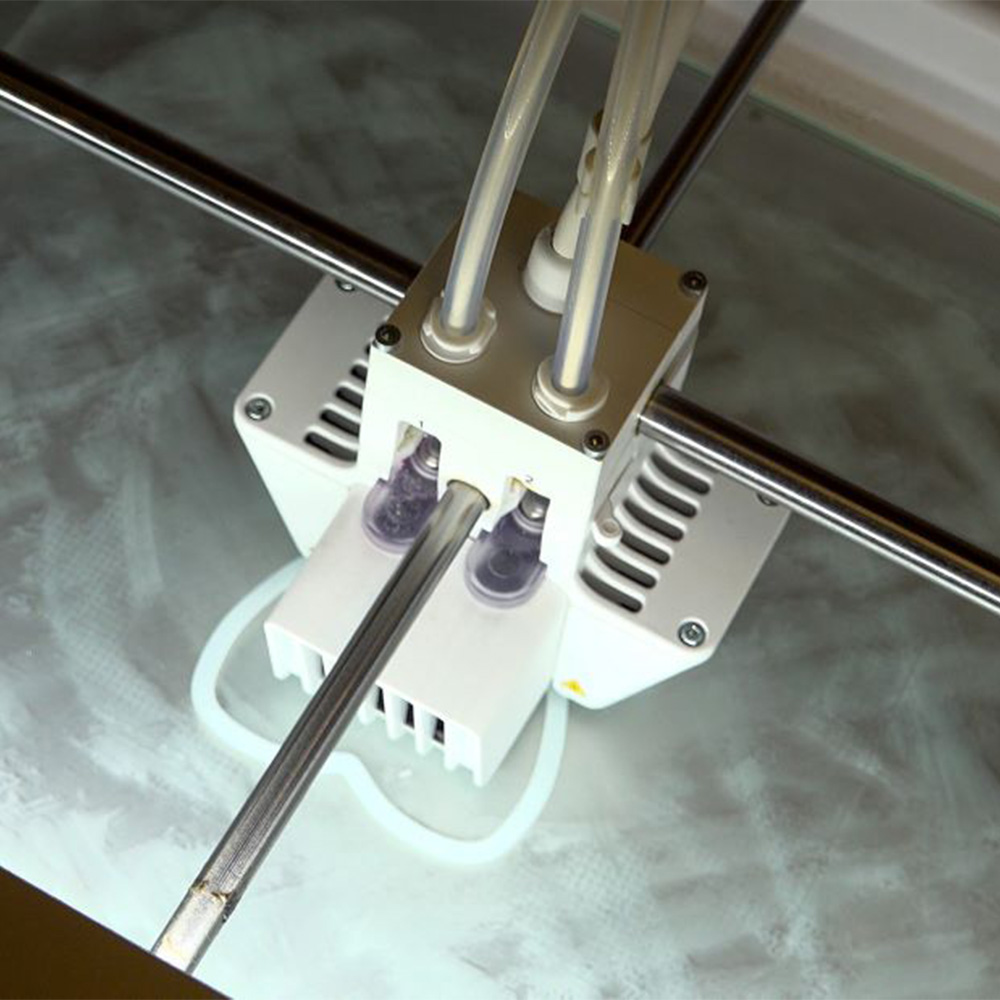Researchers find likely cause – and potential way to prevent – vision deterioration in space
Update: Video added September 25, 2017
DALLAS – January 16, 2017 – Vision deterioration in astronauts who spend a long time in space is likely due to the lack of a day-night cycle in intracranial pressure. But using a vacuum device to lower pressure for part of each day might prevent the problem, UT Southwestern Medical Center researchers said. Their study appears in the Journal of Physiology.
A change in vision is the No. 1 health risk for astronauts who spend extended periods of time on the International Space Station. The new research showed that intracranial pressure in zero-gravity conditions, such as exists in space, is higher than when people are standing or sitting on Earth, but lower than when people are sleeping on Earth. The researcher’s finding suggests that the constancy of pressure on the back of the eye causes the vision problems astronauts experience over time.

To study how zero-gravity conditions affect intracranial pressure, UT Southwestern researchers recruited volunteer patients who had had a port (called an Ommaya reservoir) permanently placed in their head as part of treatment for cancer. The ports provided a way for researchers to measure intracranial pressure. NASA flights then flew the eight volunteers one by one on steep up-and-down maneuvers (parabolic flights) that created 20-second intervals of weightlessness. The researchers measured intracranial pressure during the zero-gravity intervals and compared these with intracranial pressure during standard times of sitting, lying face upward (supine), and lying with head inclined downward.

“These challenging experiments were among the most ambitious human studies ever attempted as part of the Flight Operations parabolic flight program, and changed the way we think about the effect of gravity – and its absence – on pressure inside the brain,” said senior author Dr. Benjamin Levine, Professor of Internal Medicine at UT Southwestern Medical Center and Director of the Institute for Exercise and Environmental Medicine (IEEM), jointly run by UT Southwestern and Texas Health Resources.
“The information from these studies is already leading to novel partnerships with companies to develop tools to simulate the upright posture in space while astronauts sleep, thereby normalizing the circadian variability in intracranial pressure, and hopefully eliminating the remodeling behind the eye,” said Dr. Levine, who holds the Distinguished Professorship in Exercise Sciences.
The researchers have continued studying whether it is possible to lower intracranial pressure by means of a vacuum device that pulls blood away from the head. They previously showed that a negative pressure box that snuggly fits the lower body can lower intracranial pressure when applied for 20-minute periods. They will soon be testing the effect of the lower body negative pressure device on eye remodeling when negative pressure is applied for eight-hour periods.

“Astronauts are basically supine the entire time they are in space. The idea is that the astronauts would wear negative pressure clothing or a negative pressure device while they sleep, creating lower intracranial pressure for part of each 24 hours,” said first author Dr. Justin Lawley, Instructor in Internal Medicine at UT Southwestern and a researcher at the IEEM.
The negative pressure device research was also used with patients with Ommaya ports.
“We are extremely grateful to these brave men and women from around the country who volunteered to let us make these critical measurements on them during parabolic flight. They have been through a lot of medical procedures in their lives, and were nonetheless extremely altruistic, desiring to give something back to medical science,” Dr. Levine said of the cancer patient volunteers.
Other UT Southwestern researchers who participated in this research include Dr. Erin Howden, post-doctoral researcher; Dr. Satyam Sarma, Assistant Professor of Internal Medicine; Dr. William K. Cornwell, former cardiology fellow; Dr. Rong Zhang, Associate Professor of Neurology and Neurotherapeutics, and Internal Medicine; and Dr. Louis “Tony” Whitworth, Professor of Neurological Surgery and Radiation Oncology.
This work was supported by the National Space Biomedical Research Institute through NCC 9-58.
The Journal of Physiology publishes advances in physiology that increase understanding of how bodies function in health and disease.
About UT Southwestern Medical Center
UT Southwestern, one of the premier academic medical centers in the nation, integrates pioneering biomedical research with exceptional clinical care and education. The institution’s faculty includes many distinguished members, including six who have been awarded Nobel Prizes since 1985. The faculty of almost 2,800 is responsible for groundbreaking medical advances and is committed to translating science-driven research quickly to new clinical treatments. UT Southwestern physicians provide medical care in about 80 specialties to more than 100,000 hospitalized patients and oversee approximately 2.2 million outpatient visits a year.
###
Media Contact: Cathy Frisinger
214-648-3404
cathy.frisinger@utsouthwestern.edu
To automatically receive news releases from UT Southwestern via email, subscribe at www.utsouthwestern.edu/receivenews




